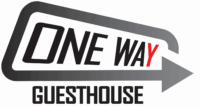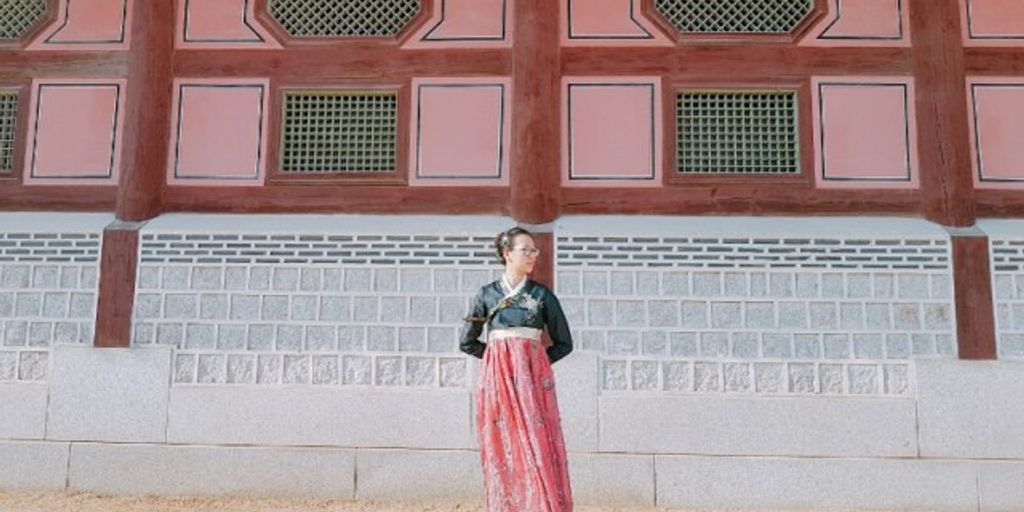South Korea is a captivating blend of ancient traditions and cutting-edge modernity. From the bustling streets of Seoul to the serene landscapes of Jeju Island, this country offers a unique travel experience that caters to all types of travelers. Whether you’re a history buff, a foodie, or an adventure seeker, our comprehensive guide, ‘Korea Revealed: Insider Tips for Your Journey,’ will provide you with all the essential information you need to make the most of your trip.
Key Takeaways
- Explore both must-see spots and hidden gems in Seoul, including historic palaces, trendy neighborhoods, and local markets.
- Indulge in Korea’s diverse culinary scene, from street food delights to traditional BBQ and vegetarian options.
- Gain a deeper understanding of Korean culture and etiquette, including respectful communication and dining manners.
- Discover day trips and weekend getaways beyond Seoul, such as historic Gyeongju, scenic Jeju Island, and Busan’s beaches.
- Equip yourself with essential travel tips, including navigating public transportation, staying connected, and understanding local laws.
Navigating Seoul: Must-See Spots and Hidden Gems
Seoul is a vibrant and exciting city with something to offer everyone. It is a fascinating blend of old and new. Begin your journey by embarking on a Seoul City Tour, an exhilarating immersion into the heart of this bustling metropolis. Marvel at the futuristic architecture, delve into ancient palaces like Gyeongbokgung, and savor delectable street food at vibrant markets. Seoul’s dynamism will captivate you from the moment you arrive.
Historic Palaces and Temples
Visit must-see places like Gyeongbokgung Palace, Namsan Park, or Bukchon Hanok Village, and let their beauty and charm leave you in awe. Hop on Korean transportation and take snapshots of the city skylines and other attractions! You can definitely create unforgettable memories in Korea without splurging!
Trendy Neighborhoods
Located in the heart of Seoul, Insadong is known as a place where you can experience traditional Korean culture. Lined with old buildings and craft shops, it is a sanctuary for those who want unusual presents, starting from ancient handmade products to modern Korean art. Allow yourself to get lost in the labyrinth of colorful lanterns and street masquerades.
Local Markets
Seoul’s artistic soul is revealed to a great extent in the nearby vibrant Insadong district known for its traditional tea houses, art galleries, and antique shops. Enjoy delectable street food at vibrant markets and savor the local flavors. The bustling markets are perfect for those who want to experience the local culture and cuisine.
Culinary Adventures: Savoring Korean Cuisine
Korean cuisine is a delightful journey for the five senses due to its vast range of flavors, textures, and variety of foods. Enjoy iconic dishes like bibimbap, a beautiful combination of rice, vegetables, and spicy gochujang sauce, and bulgogi, marinated beef shredded nicely and grilled, often partnered with kimchi.
Street Food Delights
The city’s street food markets are a reason to visit alone. From tteokbokki, sticky rice cakes in a spicy sauce, to kimbap, seaweed rice rolls, and bungeo-ppang, sweet pastries shaped like fish, street food in Seoul will exceed any and all expectations. Be brave and take your tastebuds on a journey into the unknown!
Traditional Korean BBQ
Korean BBQ is a must-try experience. You get to grill your own meat right at the table, usually accompanied by a variety of side dishes known as banchan. The marinated meats, especially bulgogi and galbi, are incredibly flavorful and tender.
Vegetarian and Vegan Options
While Korean cuisine is often meat-heavy, there are plenty of vegetarian and vegan options available. Dishes like bibimbap can be easily made vegetarian, and there are also many vegetable-based dishes like japchae, sweet potato noodles stir-fried with vegetables.
Embrace trying new foods! Even if you don’t come across English menus, most restaurants have photos of each dish which should give you a vague idea of what you’re ordering.
In the midst of your Seoul adventure, explore Busan’s culinary delights for a vibrant and memorable experience.
Understanding Korean Culture and Etiquette
Respectful Communication
In Korea, respectful communication is key. It’s common to bow when greeting someone, especially if they are older or in a position of authority. Learning a few basic phrases in Korean, like “Annyeonghaseyo” (hello) and “Kamsahamnida” (thank you), can greatly enhance your experience and show respect for the culture.
Dining Etiquette
Korean dining etiquette emphasizes the importance of the group rather than the individual. Here are some key points to remember:
- Wait for the eldest person to start eating before you begin.
- Do not blow your nose at the table; it’s considered very rude.
- If you’re dining alone, be aware that some restaurants have a ‘two portion’ rule, meaning you may need to order two portions of food.
Public Behavior
Public behavior in Korea also follows certain etiquette rules. For instance, it’s considered impolite to speak loudly in public places. Additionally, dressing in a hanbok, especially when visiting historic palaces like Gyeongbokgung and Changdeokgung, is a way to embody Korean culture and show respect for the country’s history.
Before you embark on your Korean adventure, consider these practical tips: Always be mindful of local customs and etiquette to ensure a respectful and enjoyable experience.
Exploring Beyond Seoul: Day Trips and Weekend Getaways
Seoul is full of many attractions and activities, but exploring beyond may add fun twists to your Korea trip! Each city has its own fun surprises, so why just stay in one spot? Explore more and make your trip amazing!
Historic Gyeongju
Gyeongju is like a natural history museum. You can immerse yourself in the splendor of the Joseon Dynasty palaces. It’s a great place to learn about Korea’s imperial history.
Scenic Jeju Island
Jeju Island is a volcanic island with beautiful landscapes. You can discover its unique natural beauty and enjoy various outdoor activities.
Busan’s Beaches and Markets
Busan is known for its cool beaches and vibrant markets. It’s a perfect getaway to relax and enjoy the seaside.
With easy train rides, it’s simple to go from place to place. Try a day trip to Nami Island or the DMZ for cool experiences.
Essential Travel Tips for First-Time Visitors

Navigating Public Transportation
Seoul’s public transportation system is efficient and easy to use. Get a T-money card for convenient access to buses and subways. The card can be purchased and recharged at convenience stores and subway stations. Don’t forget to download a subway map app to help you navigate the city.
Staying Connected: SIM Cards and Wi-Fi
Staying connected in Korea is simple. You can buy a local SIM card or rent a portable Wi-Fi device at the airport. This will help you with navigation and communication throughout your trip. Many accommodations, like the Kimchee Guesthouse Busan, offer free Wi-Fi.
Safety Tips and Local Laws
Korea is generally a safe country, but it’s always good to be cautious. Keep an eye on your belongings, especially in crowded areas. Familiarize yourself with local laws to avoid any misunderstandings. For example, it’s illegal to smoke in public places except in designated smoking areas.
Remember, a little preparation goes a long way in ensuring a smooth and enjoyable trip.
Seasonal Highlights: Best Times to Visit Korea
Spring Blossoms and Festivals
Spring in Korea, from March to May, is a magical time. The weather is pleasant, and the flowers are in full bloom. Cherry blossoms are a major attraction, and many festivals celebrate this beautiful season. It’s a special experience to grab a cup of coffee in a cafe where you can see the pink petals falling from the cherry trees outside.
Summer Activities and Beaches
Summer in Korea, from June to August, is hot and humid. While July and August can be unbearably hot and are also monsoon season, June offers a great time to visit beaches and enjoy water activities. Plan your activities accordingly and pack appropriate clothing to fully enjoy what each season has to offer!
Winter Sports and Hot Springs
Winter in Korea, from December to February, is cold with Siberian temperatures. This season is perfect for winter sports like skiing and snowboarding. However, if you’re not into winter sports, you might find the cold weather challenging. Visiting hot springs can be a relaxing way to warm up during this chilly season.
Each season in Korea brings its own unique charm and array of activities. Whether it’s the cherry blossoms in spring, the beaches in summer, or the snowy landscapes in winter, there’s always something special to experience.
Shopping in Korea: From Traditional Markets to Modern Malls
Shopping in Korea is an adventure that blends the old with the new. From bustling traditional markets to sleek, modern malls, there’s something for everyone. Korea is a land full of fascinating contrasts, and this is especially true when it comes to shopping.
Unique Souvenirs
In the vibrant Insadong district, you can find traditional tea houses, art galleries, and antique shops. It’s a sanctuary for those who want unusual presents, starting from ancient handmade products to modern Korean art. Local markets also provide an attractive opportunity to enroll in a cultural trip, giving you the chance to meet friendly vendors and fellow food lovers.
Fashion Districts
For fashion and beauty, shopping districts like Myeongdong and Gangnam provide a glimpse into Korea’s worldwide role in trends. Don’t forget to visit modern wonders like Dongdaemun Design Plaza, which hosts exhibitions and other events alongside an amazing LED light show during evenings.
Tech and Gadget Stores
Korea’s booming electrical industry is evident in its tech and gadget stores. From the latest smartphones to innovative home appliances, you’ll find cutting-edge technology that showcases Korea’s role as a leader in the tech world.
On your tour of the city, you should not forget to visit modern wonders like Dongdaemun Design Plaza. It is a futuristic architecture that hosts exhibitions and other events alongside an amazing LED light show during evenings.
Conclusion
Embarking on a journey to Korea is an adventure filled with vibrant culture, rich history, and unforgettable experiences. From the bustling streets of Seoul to the serene landscapes of the countryside, Korea offers a unique blend of the traditional and the modern. Whether you’re exploring ancient palaces, indulging in delicious street food, or immersing yourself in local customs, this guide has provided you with essential tips and insights to make your trip smooth and enjoyable. Remember, the key to a memorable journey lies in embracing the local culture and stepping out of your comfort zone. Safe travels and enjoy every moment of your Korean adventure!
Frequently Asked Questions
What are the must-see historic sites in Seoul?
Seoul is home to several historic sites, including Gyeongbokgung Palace, Changdeokgung Palace, and Jogyesa Temple. These sites offer a glimpse into Korea’s rich history and architectural beauty.
What are some trendy neighborhoods to explore in Seoul?
Some trendy neighborhoods in Seoul include Hongdae, known for its vibrant youth culture and nightlife, and Garosugil in Gangnam, famous for its chic boutiques and cafes.
What are the best street foods to try in Korea?
Must-try street foods in Korea include tteokbokki (spicy rice cakes), hotteok (sweet pancakes), and odeng (fish cake skewers). These can be found at local markets and street stalls.
How can I navigate public transportation in Korea?
Korea has an extensive and efficient public transportation system, including subways, buses, and taxis. It’s advisable to get a T-money card for convenient access to all modes of transport.
What cultural etiquette should I be aware of when visiting Korea?
When in Korea, it’s important to bow when greeting, remove shoes before entering homes, and use both hands when giving or receiving something. Respect for elders is also a significant aspect of Korean culture.
When is the best time to visit Korea?
The best time to visit Korea depends on your interests. Spring (April to June) offers beautiful cherry blossoms, while autumn (September to November) boasts pleasant weather and vibrant fall foliage.

